The War Remnants Museum in Ho Chi Minh City stands as a powerful testament to the resilience and heroism of the Vietnamese people. For visitors, the museum offers a poignant journey through the harrowing years of the war, providing deep insights into the conflict that shaped modern Vietnam.
Visiting this attractions is one of the things to do in Ho Chi Minh City when traveling here
Necessary information about the War Remnants Museum
Discover essential details about this museum, including its location, historical significance, entry fees, and opening hours, ensuring you have all the information needed for a meaningful visit.
Where is the War Remnants Museum?
The Vietnam War Museum is centrally located in Ho Chi Minh City, specifically at 28 Vo Van Tan Street, District 3. This prime location makes it easily accessible for both locals and tourists, allowing for convenient visits to other nearby attractions.
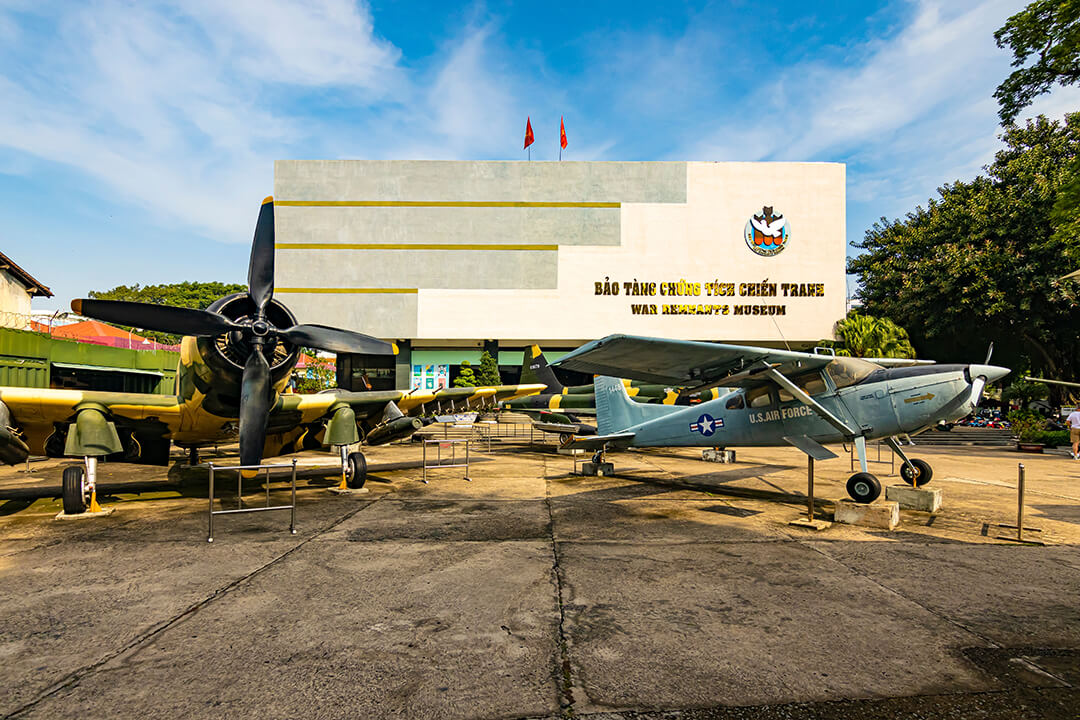
The museum is a short distance from popular tourist spots such as the Reunification Palace and Notre-Dame Cathedral Basilica of Saigon. For those using public transportation, several bus routes stop near the museum, and taxis or ride-hailing services are readily available.
The historical significance of the War Remnants Museum
The War Remnants Museum, originally known as the Exhibition House for US and Puppet Crimes, was established in 1975. The museum’s primary goal is to document the impacts of the war on the Vietnamese people and to promote peace and reconciliation. It serves as a stark reminder of the atrocities of war and the resilience of those who lived through it.
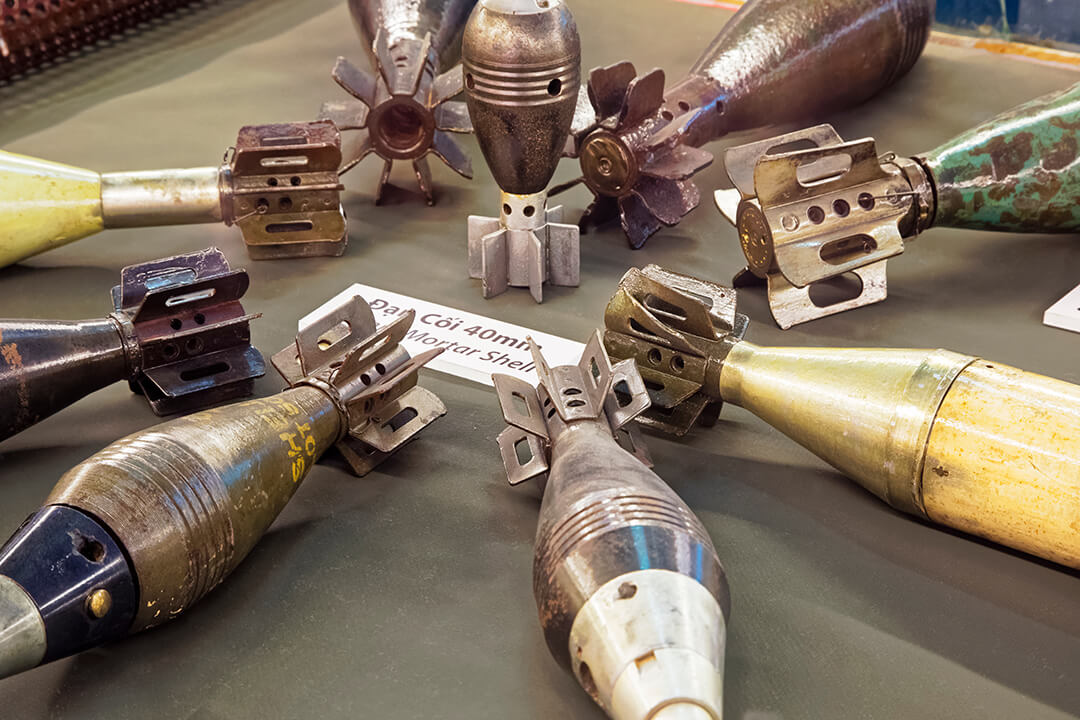
The museum houses an extensive collection of artifacts, photographs, and documents that depict the brutal realities of the conflict, offering an unflinching look at the war.
Entry fee and opening hours of the museum
The Vietnam War Museum in Ho Chi Minh City offers affordable entry fees and convenient opening hours, making it accessible for visitors to explore its extensive exhibits and learn about the war.
Entry fee of the Vietnam War Museum Ho Chi Minh City
The entry fee is modest, around 40,000 VND (approximately 1.70 USD) per person. There are discounts available for students and senior citizens, and children under the age of six can enter for free. This nominal fee helps maintain the museum and supports its educational programs.
Opening hours
The War Remnants Museum is open daily from 7:30 AM to 5:30 PM (the ticket counter closes at 5:00 PM). These hours allow ample time for visitors to explore the extensive exhibits and outdoor displays. It is advisable to allocate at least two to three hours for your visit to fully appreciate the museum’s offerings. During weekends and public holidays, the museum can be quite busy, so visiting on a weekday might provide a more relaxed experience.
Things to see in the War Museum Ho Chi Minh
The War Remnants Museum Vietnam offers a wealth of exhibits that provide a comprehensive look at the war from various perspectives. Each section of the museum is thoughtfully curated to educate and provoke reflection among its visitors.
See military vehicles in the outdoor exhibition
Upon entering the museum grounds, visitors are greeted by an impressive display of military vehicles used during the war. This outdoor exhibition includes tanks, helicopters, fighter jets, and artillery pieces. These machines, once symbols of conflict, now serve as silent witnesses to the past. Walking among these imposing vehicles, visitors can gain a tangible sense of the scale and technology of the war.
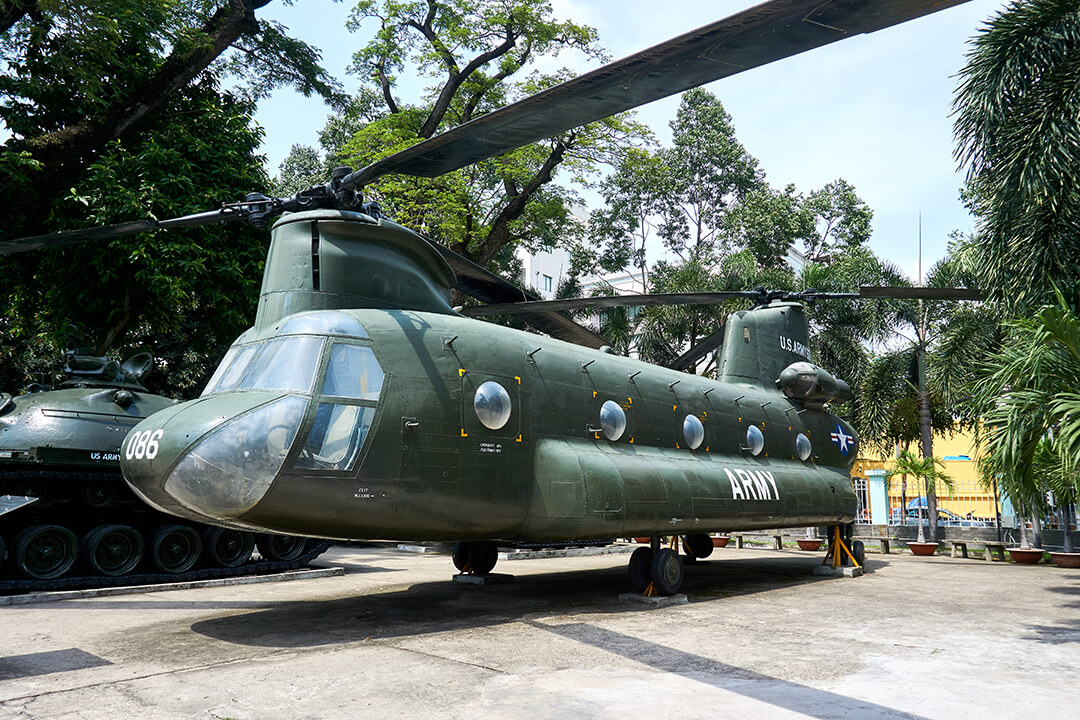
The outdoor exhibits also include a replica of the notorious tiger cages used to imprison Viet Cong fighters, providing a grim insight into the conditions endured by many during the war.
Documents about the war in the ground floor exhibition
The ground floor of the Ho Chi Minh City War Museum features a vast collection of documents and photographs that detail the history of the war. These exhibits include official records, personal letters, and news reports from the era.
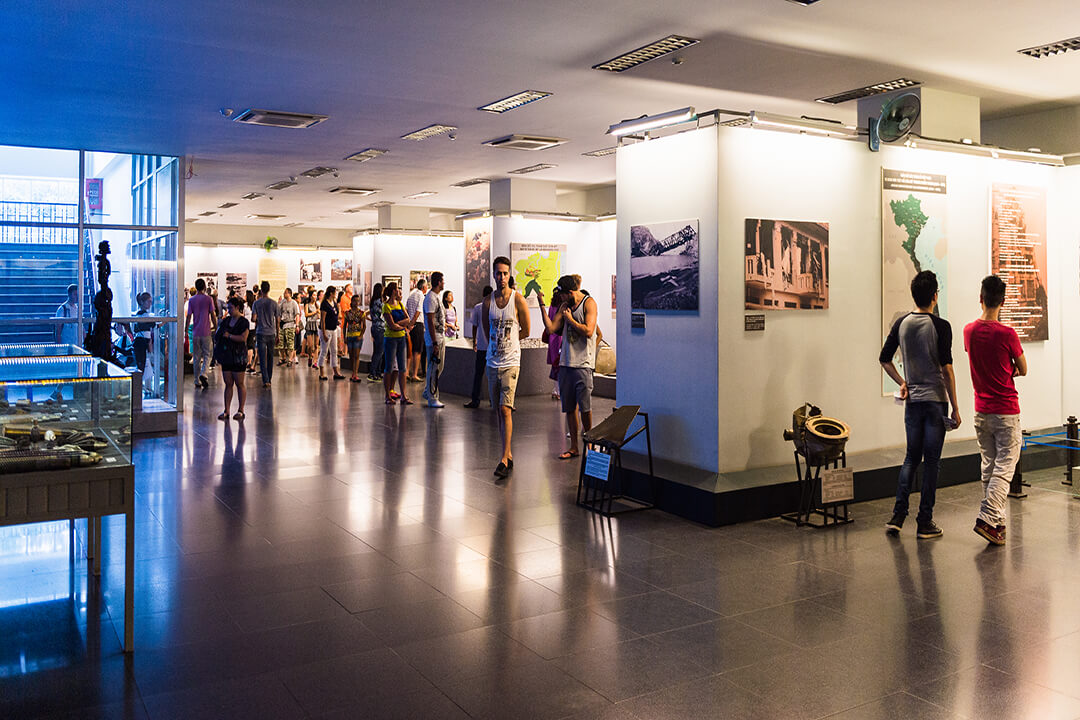
The extensive photographic collection provides a visual chronology of the conflict, capturing moments of intense combat, daily life during the war, and the aftermath of the fighting. This section of the museum is particularly impactful, as it presents the human side of the war through the faces and stories of those who experienced it firsthand.
First floor – Learn about the effects of Agent Orange
One of the most harrowing sections of the museum is the exhibit dedicated to the effects of Agent Orange. The first floor houses detailed displays about this chemical defoliant used by the US military, highlighting its devastating impact on the Vietnamese landscape and population.
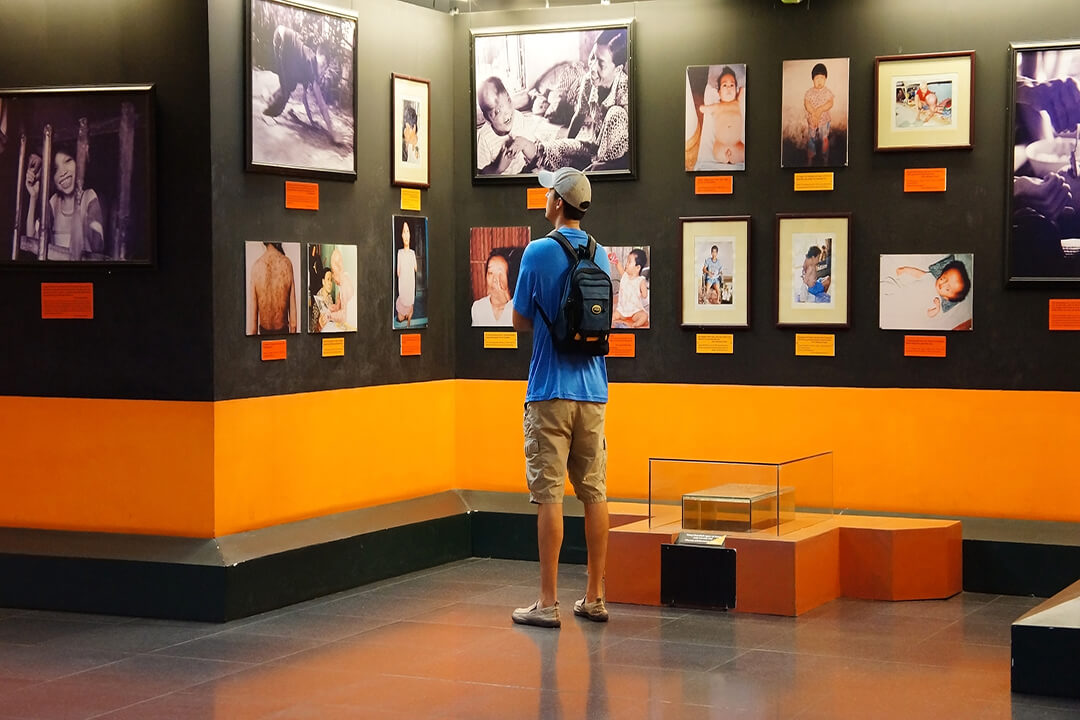
The exhibits include photographs of the environmental destruction and the severe health problems suffered by those exposed to Agent Orange, including subsequent generations born with birth defects. This section also features scientific reports and personal testimonies, providing a comprehensive look at one of the war’s most tragic legacies.
Second floor – Images and weapons during the war
The War Remnants Museum in Vietnam’s second floor showcases various weapons used during the war, alongside powerful photographic exhibitions. Visitors can see an array of firearms, grenades, and other weaponry, each accompanied by detailed descriptions of their use in the conflict.
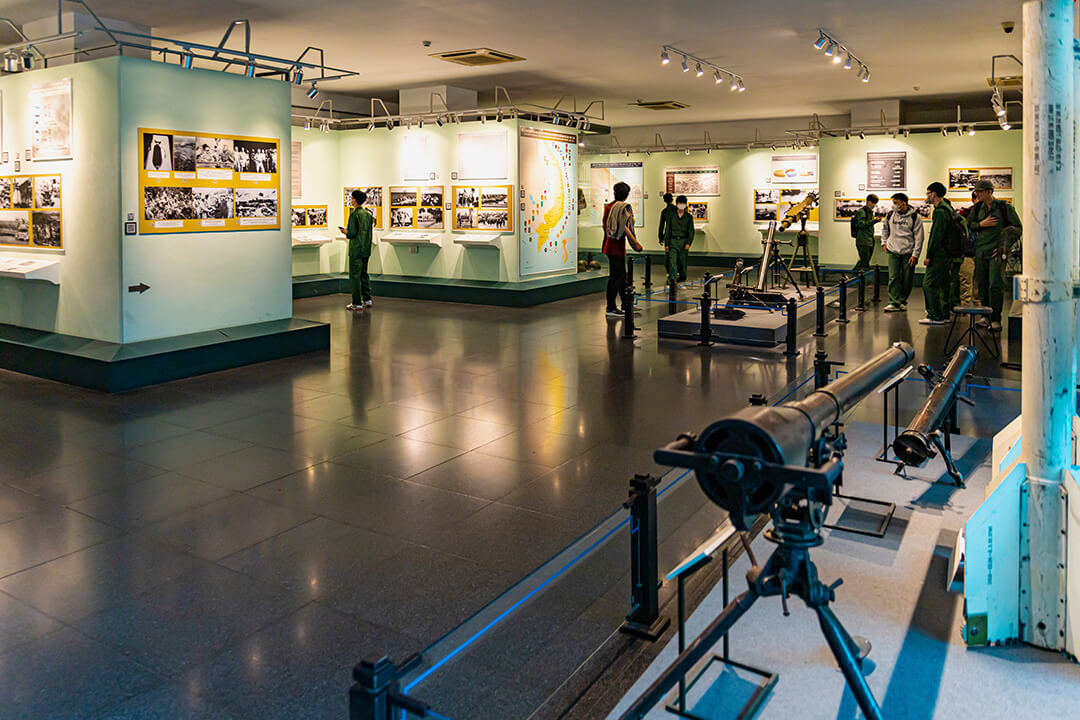
The photographic displays on this floor are particularly compelling, capturing the intense emotions and stark realities of the war. These images, taken by war correspondents and photographers, offer a raw and unfiltered look at the conflict, from the battlefields to the civilian lives irrevocably changed by the war.
Things to do in the War Remnants Museum Saigon
Beyond viewing the exhibits, there are several activities that visitors can engage in to deepen their understanding and appreciation of the War Remnants Museum.
Explore the exhibits
Taking the time to thoroughly explore each exhibit is essential for a complete experience at the War Remnants Museum. Each section offers a different perspective on the war, providing a multi-faceted understanding of the conflict. Whether you are examining military equipment, reading personal letters, or viewing photographs, immersing yourself in the details will enrich your visit.
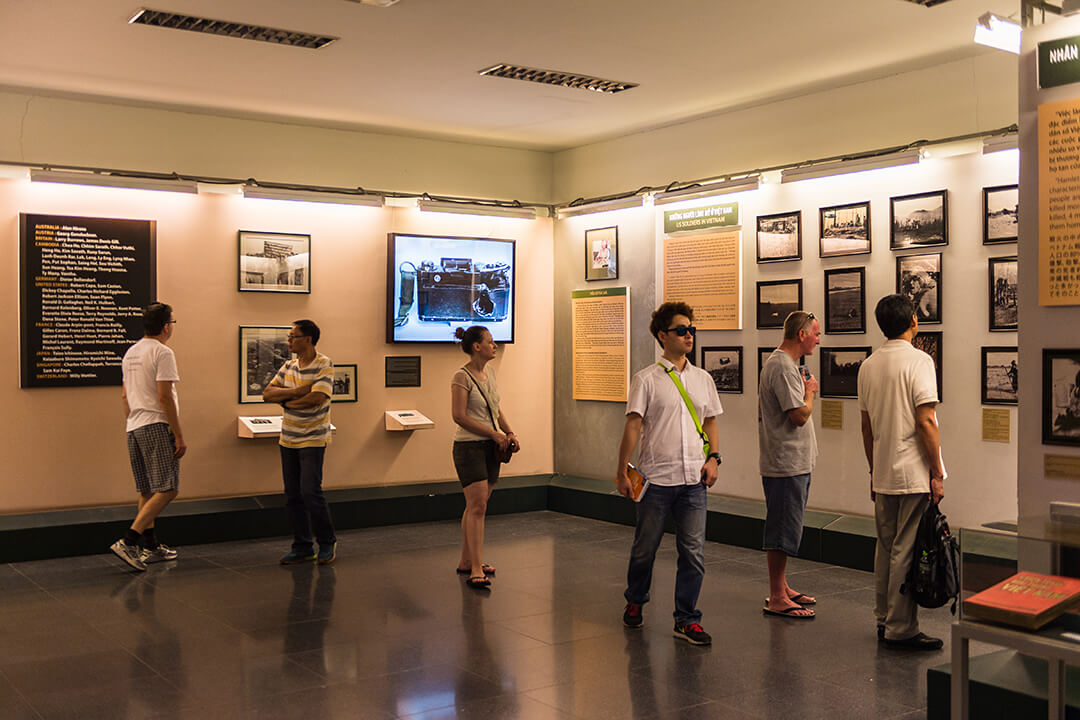
Visit the outdoor display
The outdoor display is a must-see, featuring an array of military vehicles and artillery. Walking among these relics provides a physical sense of the war’s scale and technological aspects. The outdoor area also includes interpretive panels that offer historical context, making it a valuable part of the museum experience.
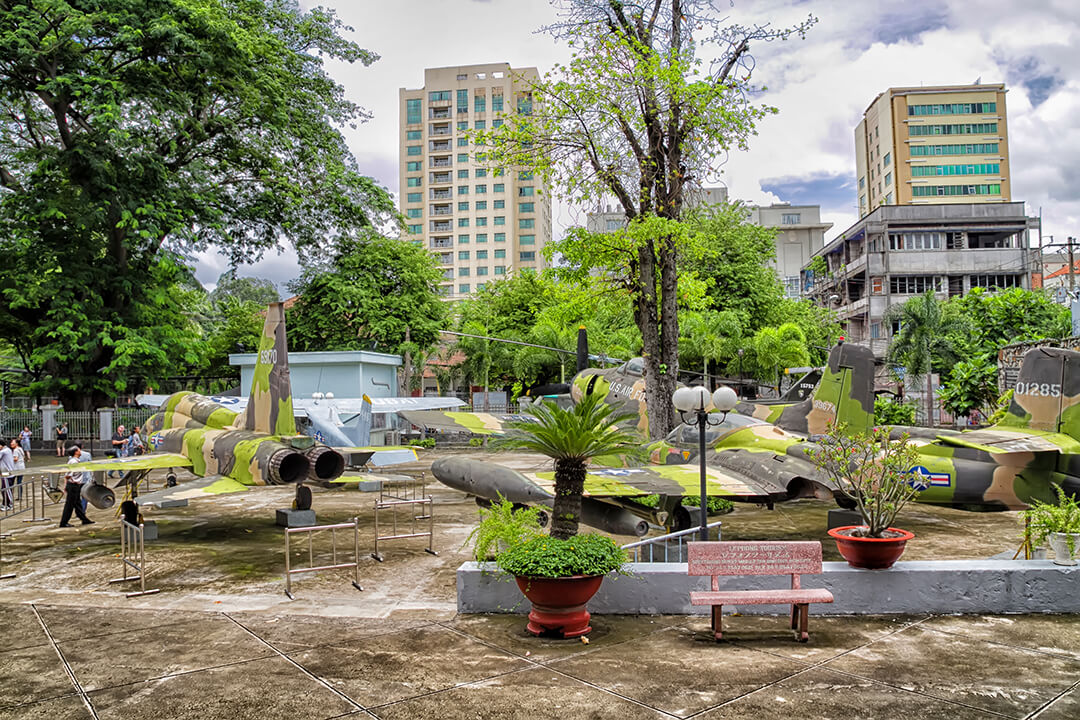
Read personal stories
The personal stories featured throughout the Vietnam War Museum Ho Chi Minh are among its most moving elements. These narratives, presented through letters, photographs, and testimonials, give a voice to the individuals who lived through the war. Reading these stories helps to humanize the conflict, providing a personal connection to the historical events.

View war photographs
The war photographs displayed in the museum are powerful visual documents of the war. These images, captured by both professional photographers and ordinary people, provide an unfiltered look at the realities of the conflict. Viewing these photographs is an emotional experience that offers a deeper understanding of the war’s impact on both soldiers and civilians.
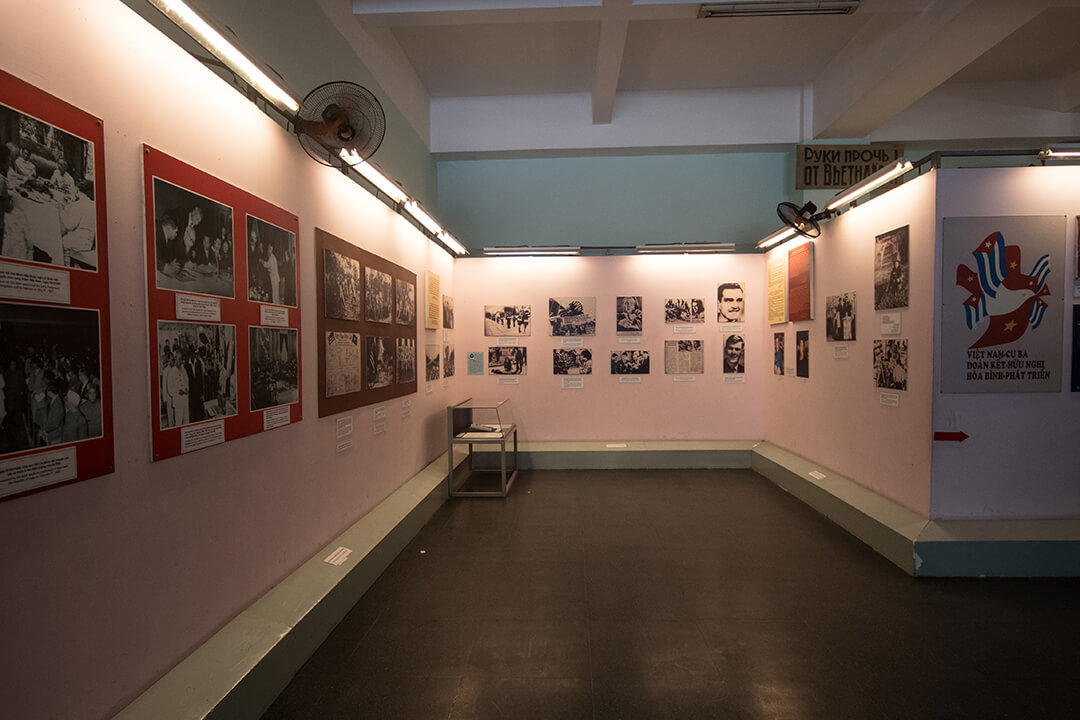
Learn about the peace movement
The Vietnam War Remnants Museum Ho Chi Minh also highlights the global peace movement that emerged in response to the war. Exhibits on this topic include posters, banners, and other artifacts from anti-war protests around the world. Learning about these movements offers insight into the broader social and political context of the war, as well as the global desire for peace and reconciliation.
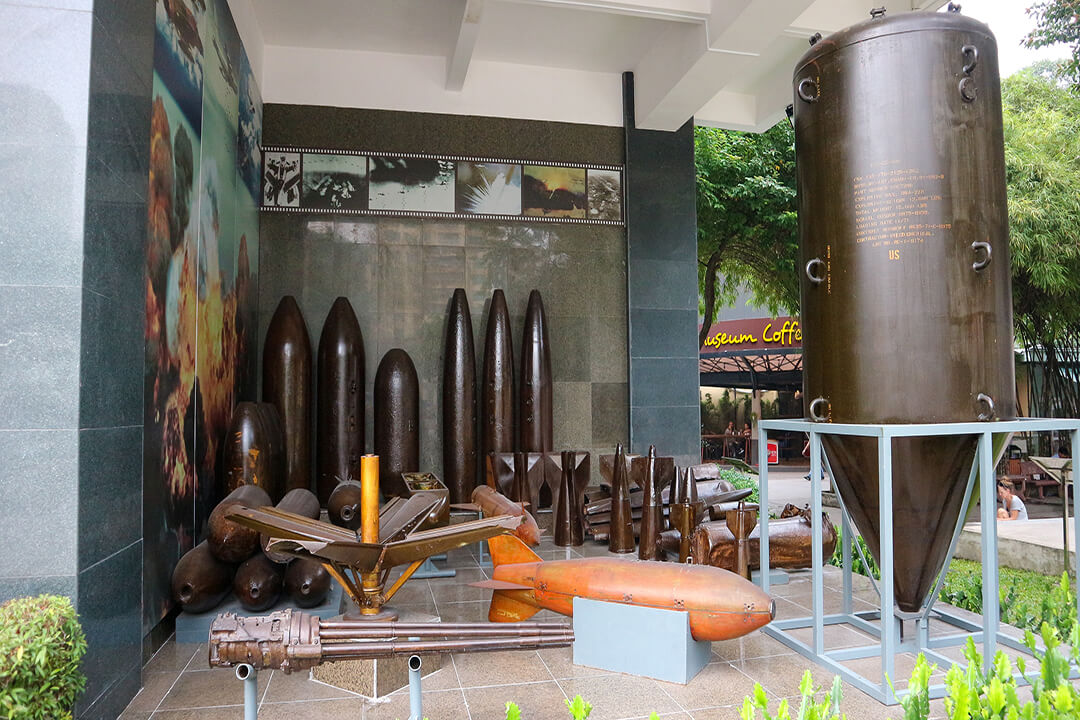
Visit the gift shop
The museum’s gift shop offers a variety of souvenirs and educational materials related to the war. Visitors can purchase books, posters, and other items that provide additional information about the war and the museum’s exhibits. The gift shop is a great place to find meaningful mementos of your visit.

Attend educational programs
The Ho Chi Minh War Remnants Museum frequently hosts educational programs and events designed to deepen visitors’ understanding of the war. These programs may include lectures, film screenings, and guided tours led by knowledgeable staff. Attending these events can provide valuable context and enhance your museum experience.
Reflect and remember
The War Remnants Museum offers a space for reflection and remembrance. The museum’s exhibits are designed to provoke thought and encourage visitors to consider the lessons of the war. Taking the time to reflect on what you have seen and learned is an important part of the museum experience.
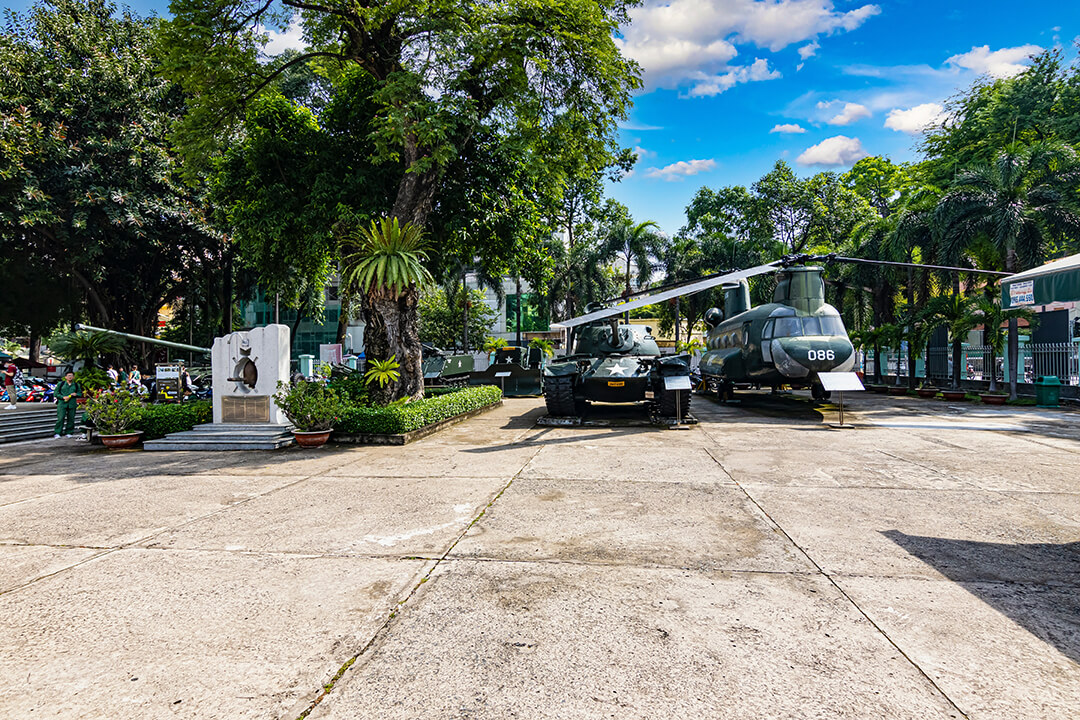
Other attractions in Ho Chi Minh City related to the war
Ho Chi Minh City is home to several other attractions that provide additional insights into the war and its legacy. These sites complement a visit to the War Remnants Museum and offer a broader understanding of the conflict and its impact on Vietnam.
Cu Chi Tunnels
The Cu Chi Tunnels are an extensive network of underground tunnels used by Viet Cong soldiers during the war. Located about 70 kilometers northwest of Ho Chi Minh City, the tunnels are now a popular tourist attraction. Visitors can explore the tunnels and learn about their role in the war, as well as the daily life of the soldiers who lived and fought in them.
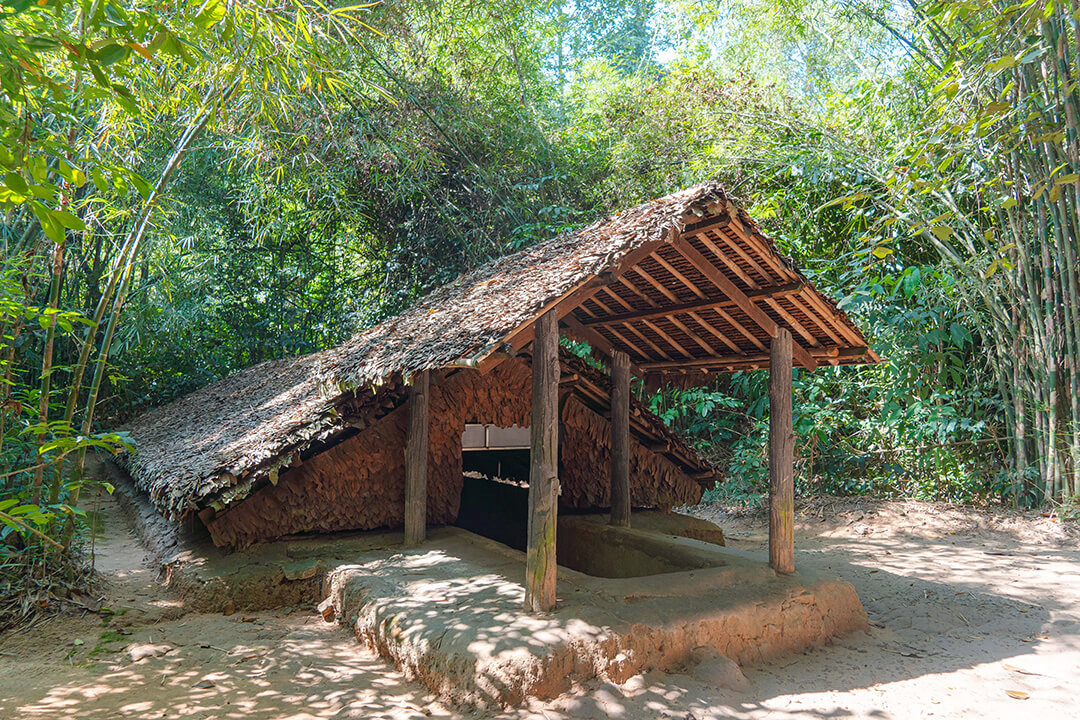
Reunification Palace
The Reunification Palace, also known as the Independence Palace, is a historic landmark in Ho Chi Minh City. It was the site of the official end of the war when tanks crashed through its gates on April 30, 1975. Today, the palace is a museum that offers guided tours and exhibits about its history and significance.
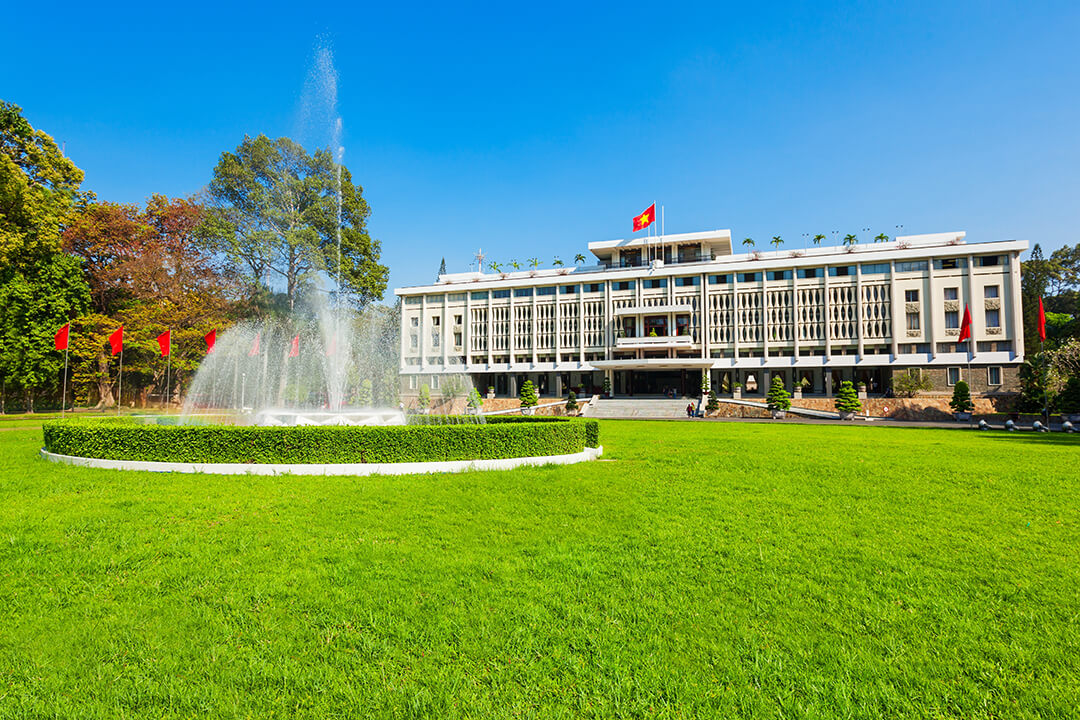
The 30/4 Park (April 30 Park)
The 30/4 Park, located near the Reunification Palace, is a peaceful green space that commemorates the end of the war. The park is a popular spot for both locals and tourists to relax and reflect on the historical significance of the area.
Things you might be interested in:
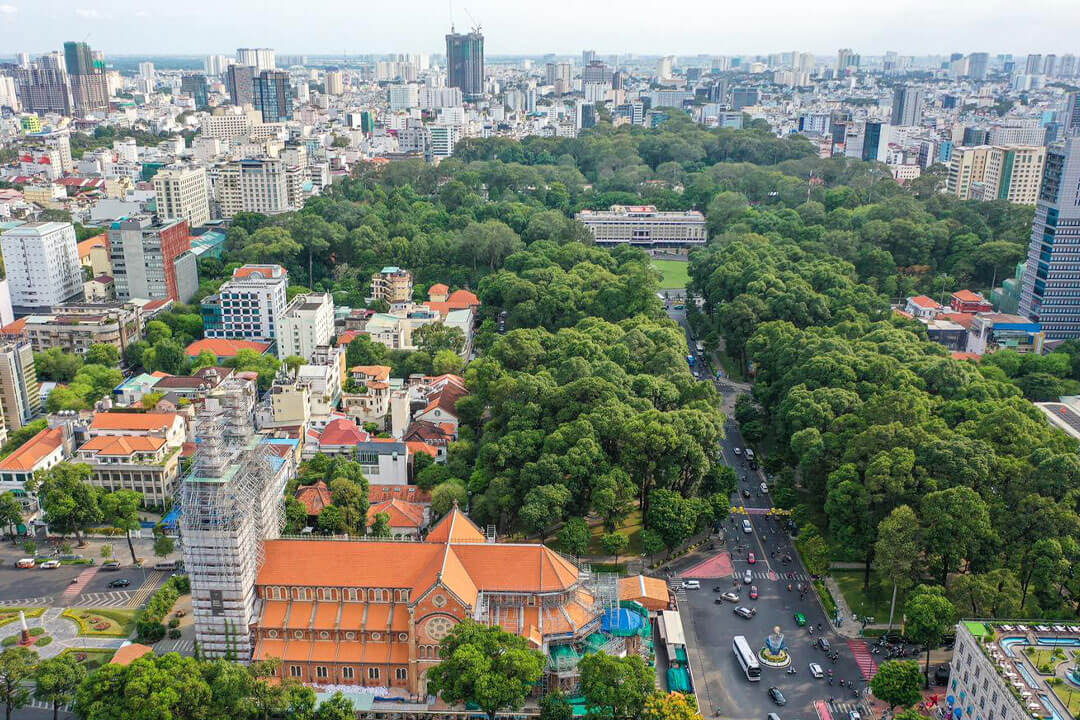
Ho Chi Minh City Museum
The Ho Chi Minh City Museum, housed in a beautiful French colonial building, offers exhibits on the history and culture of the city. The museum includes sections on the war, providing additional context and insights into the conflict.
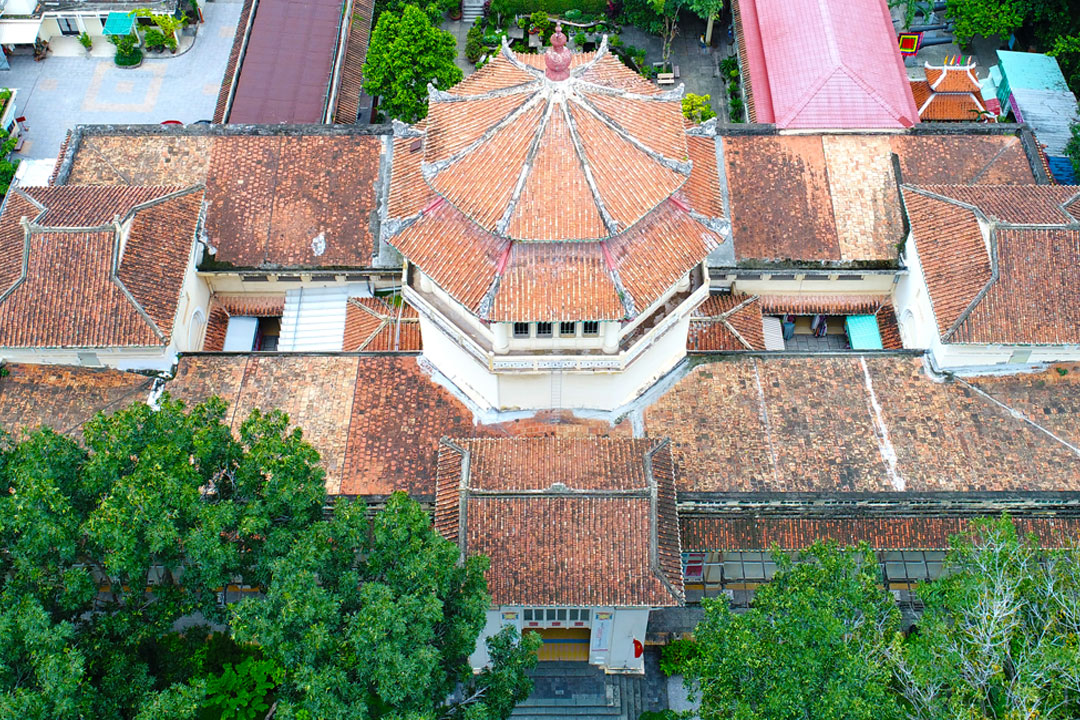
Binh Tay Market
Binh Tay Market, located in District 6 of Ho Chi Minh City, is a bustling marketplace that offers a glimpse into daily life in the city. The market’s history dates back to the early 20th century, and it played a role in the local economy during the war.
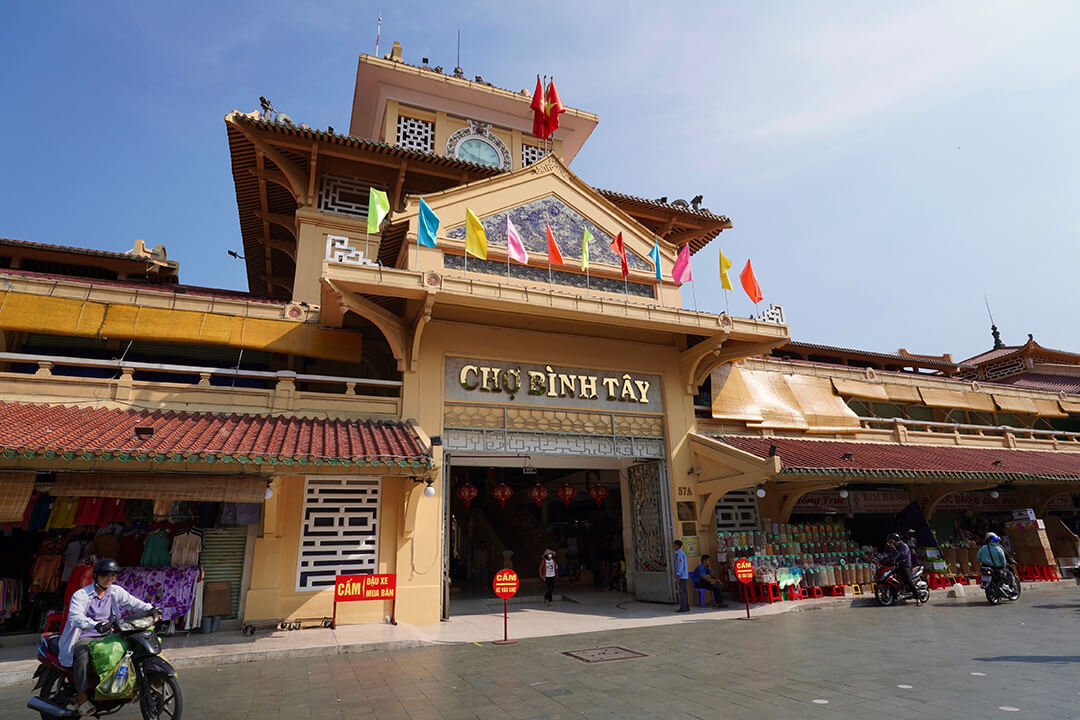
The War Remnants Museum in Ho Chi Minh City offers a profound insight into the war and its impact on the country. For those planning their visit, Vietnam Travel Tips recommends including these sites in your itinerary to gain a deeper appreciation of the country’s heroic history and enduring spirit.


